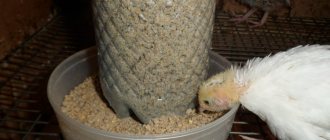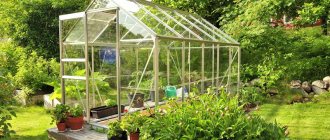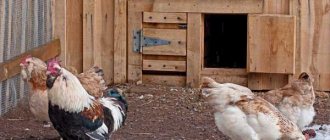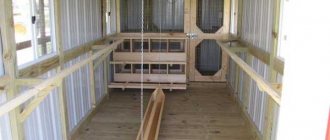The vast majority of those who have summer cottages and garden plots for personal use sooner or later think about building greenhouses using a frame made of arcs. You can make arcs for a greenhouse with your own hands. Of course, the presence of such a structure in the country only brings benefits. This structure protects plants from the vagaries of the weather and allows you to grow seedlings of many plants inside when growing them outdoors is out of the question. In principle, it is like a small greenhouse, only with small features.
A greenhouse is a stationary, very simple structure that is built both on the surface of the soil and slightly deeper into it. As for the shape, it can be varied - from the classic rectangular to round and oval. In addition, there are greenhouses that can be moved. Today's market for gardening goods is striking in its diversity and offers a variety of mini-greenhouse models to choose from. These devices are manufactured at industrial enterprises, therefore they are distinguished by quality and ease of installation. But there is also a downside to the coin - their price is quite high.
Therefore, if you really want to try gifts from the garden, grown with your own hands, without spending significant money on purchasing a factory-made greenhouse, you can try making it yourself. The main detail in the design of such a structure is the frame. The easiest way to make it is from homemade arcs. For their manufacture, various materials available in almost every household are suitable: cuttings of hoses, plastic tubes, parts of window frames, and so on.
Arcs for a greenhouse from pieces of unnecessary hose
Needless to say, every dacha owner almost certainly has an old hose or some pieces of it that have not been used for watering for a long time. If this is so, then we can say that the issue of arcs for a greenhouse has already been resolved. The hose is cut into pieces of the appropriate size, and flexible rods (preferably willow) are inserted into these pieces. The end of the rod that sticks into the ground must be pointed. The ends of the rods are attached to the hose and given an arched appearance before installation. The process is complete, all that remains is to cover the greenhouse with a covering.
Option two
There will be more hassle with installing the structure in this option, but it is much more reliable and will last longer. In order to build arcs for a greenhouse with your own hands using this method, you will need the same PVC pipes and construction fittings or other rods that fit freely into them.
The rods must be cut: approximately 60 cm each. After this, they are driven one third into the ground. We put a pipe on the remaining part and connect it. The main thing is to cut the pipe to the correct size in advance.
Reliable and strong plastic arcs for greenhouses
The most practical option for making greenhouse arcs is to make them from polyvinyl chloride (PVC) pipes.
There are two options for this operation.
Option #1
First you need to prepare and mark the place where the specified structure will be installed. To do this, pins are driven shallowly into the ground along its perimeter so that the height of their ground part does not exceed 15-20 centimeters, and the distance between them is approximately 50 centimeters. Then the cut pieces of pipe are put on them. The length of these pieces is selected in such a way as to ensure the desired height of the building. To increase the rigidity of the entire structure, a piece of pipe is attached to the arches on top along the entire length of the future greenhouse.
Option No. 2
The sequence of operations is similar to the first. But instead of small pins, pieces of metal rod or reinforcement are driven into the ground so that their height above the ground is at least 40 centimeters. This feature makes the greenhouse frame more resistant to wind and other loads. The main thing in this procedure is to accurately calculate the required pipe length.
Another advantage of this method is that PVC pipes have excellent flexibility, which means that the greenhouse can be made of any configuration. In the process of constructing such a structure, it is also necessary to take into account the prevailing wind directions in the area and other climatic features. Experienced summer residents advise not to deviate from the classic methods of building a greenhouse, otherwise there is a risk that it will not live up to the hopes placed on it and will become a source of unnecessary trouble.
How to make arcs for a small structure yourself
For a long time, gardeners have considered greenhouse and greenhouse to be synonymous words, but still there is a difference between the structures:
- A greenhouse is a small model that is designed primarily to protect plants and vegetables from unfavorable conditions during the ripening period.
- And also for growing and accelerating cuttings for ornamental and garden crops, which are subsequently planned to be planted in open ground.
Note. To maintain a certain temperature regime in greenhouses, a “warm greenhouse” is used (the process of biothermal decomposition of waste).
- The greenhouse is capable of performing all the necessary functions from beginning to end associated with growing crops all year round.
A greenhouse differs from a greenhouse in its size and cultivation technology. The structures are equipped with ventilation, heating and irrigation systems.
Arcs for greenhouses, plastic and metal
How to make a simple design with your own hands
Plastic arcs for a greenhouse and the choice of material for them depends on how long you plan to use the structure:
- For a simple temporary greenhouse, you can use regular willow twigs that can be pulled through scraps of garden hose.
- Sometimes you can even see wooden arches for the frame. But they are quite difficult to manufacture and require more time.
Advice. Therefore, it is recommended to use metal and plastic arcs for greenhouses for manufacturing.
- Plastic arcs for greenhouses are made from various plastic pipes.
Advice. The simplest and most inexpensive option is to use an ordinary water pipe as the starting material.
The advantages of this choice include:
- Simple manufacturing process.
- Low price.
- Easy installation.
- The most significant advantage is light weight.
Advice. Therefore, plastic arcs for a greenhouse are suitable only for low, small-sized structures and in places where there is little wind activity.
A few words about metal arcs:
- This design is more reliable, but there is one drawback; you cannot do without certain skills in welding work.
- Metal arches are durable and versatile.
- The price of work and material will be more expensive.
Arc-shaped metal pipes can be made using Volnov. You can make such a machine yourself; there are special manufacturing instructions.
Sequence of operations
1. First, the length of the half-arc is measured. Mistakes here are completely unacceptable. 2. A pipe whose length is equal to the length of two half-arcs is cut into two equal parts. 3. Tees are welded to the upper pipe at a distance of up to 60 cm from each other. 4. The cut parts are connected to the upper pipe using a cross. 5. To the extreme arc where the door is planned, another pair of tees is welded so that their third holes look down. They should be equidistant from each other.
Some experts pass reinforcement through the entire length of plastic pipes and bend such a structure until an arc is obtained. Of course, this method is the most labor-intensive and time-consuming. But as a result, the greenhouse gains unsurpassed strength and durability. Corrosion will not affect the metal, and the coating will not come into contact with irregularities and burrs of the reinforcement (rod).
DIY greenhouse (video)
So, what should the arcs for a greenhouse be like:
- Easy to use. Agree, it is most convenient to work with a material that is easy to process, manageable in the hands, does not weigh hundreds of kilos and is not intimidating in size and volume. Therefore, when choosing material for creating arcs for a greenhouse, consider these parameters;
- Easy to bend. It will be very difficult to bend a profile pipe or corner into a semicircle with your own hands, and therefore you should choose a material that is easily deformed, without unnecessary effort and expense;
- Durable materials. Despite the fact that the arches should bend easily, they should also be strong so that they can be covered with film and tied into a single structure without any problems. Also, this characteristic will help them to securely secure themselves in the frame and increase the service life of the entire greenhouse as a whole;
- Reliable and durable. Nobody wants to build a greenhouse out of arcs every year, wasting time and money, and therefore the arcs must be reliable and truly durable so that they can last at the dacha for ten years, or even more.
It is very simple to choose a material in accordance with these characteristics, for example, the same reinforcement, which bends perfectly, or plastic pipes, which have virtually no wear. But you can also increase costs a little and create a truly masterpiece, which is recommended by many experienced craftsmen - these are arcs made of reinforcement and pipes (reinforcement in a plastic pipe). Of course, you may not like such a combination, it may seem expensive or time-consuming, but believe me, the design of such pipes will be practical and of high quality, and its installation will be carried out very quickly.
What's good about these types of arcs? Firstly, the reinforcement will bend perfectly into the required shape and arc radius, withstand a large load, and give the structure strength. Secondly, the plastic pipe will protect the fittings from wear, that is, it will not allow it to deteriorate prematurely, and will also save the film from quickly rubbing against the metal at the points of contact.
Of course, this project is a little more expensive, and perhaps it will be even easier to buy arcs on the market or in a special hardware supermarket, but remember that thanks to the combination of melon materials you can create not only a high-quality greenhouse, but also a greenhouse of almost any shape. In the supermarket you will be offered literally several options of sizes and shapes.
Installing such arcs for a greenhouse will be very simple. It can be organized by welding (with fastening the reinforcement to any frame), or by mounting it on brackets and clamps, securing the pipe itself. Next, only the covering and internal arrangement of the greenhouse.
Window frames - why not?
Window frames that remain after installing new windows should not be thrown away in a hurry. From them you can build a very interesting greenhouse-type structure. To do this, you will need a minimum of tools and devices - the frames themselves, some pine boards, strong timber, glue and self-tapping screws. Its main advantage is that it transmits ultraviolet radiation very well, which enhances the desired effect inside. First, the façade of the building is constructed, onto which the window frame is then attached. The frames should open freely, and the upper gap between them should be closed using a ridge. It is noted that the installation of such a building requires quite a significant amount of time.
Additional recommendations for making PVC arches
The distance between the arcs should not be more than one meter. In order to bend a polyvinyl chloride pipe, you should use a hair dryer. It is set to a temperature of 180˚C. Fiberglass reinforcement can also be used as arches. It has two main advantages, expressed in lightness and flexibility.
It is necessary to make holes on the wooden frame, the diameter of which will correspond to the diameter of the reinforcement. An interval of 50 cm must be maintained between the arcs. Next, the arc is inserted into the opposite hole. When choosing this material, you can be sure that the structure will be strong and durable.
Installation location and recommended dimensions
It goes without saying that the greenhouse must be placed in a dry place so that the wind load on it is minimal. In addition, it is desirable that one of its slopes faces south. It is recommended to build tunnel-type greenhouses of the following dimensions:
• height – up to 80 cm; • length – up to 6 m; • the width should be no more than 100-120 cm.
If the greenhouse is single-row, then its width is recommended to be about one and a half meters, double-row - up to 220 cm, three-row - 400-440 cm. Such a greenhouse design, even made by yourself, can be guaranteed to last for quite a long time.
Metal arcs
The metal frame is deservedly considered the strongest and most durable, but its production requires certain skills and special tools.
A permanent metal greenhouse made from arches is built with your own hands, as a rule, from a square or rectangular pipe with a wall thickness of 2 mm.
Construction on metal arches.
- The arched structure itself should be assembled from 2 parts. To make a half-arc you will need a Volnova pipe bending machine. But there is no point in buying it or making it yourself if you are going to build 1 greenhouse. Often, companies selling metal profiles have this machine and provide the service of cutting and bending pipes free of charge or for little money.
- First of all, make a detailed drawing of your design, you will need it to calculate the amount of material.
- Next, purchase the required amount of pipes, crosses, mating angles and metal screws.
Pipe connections.
- If you have a welding machine, then you can easily and quickly weld the entire frame, without using corners and crosses, but I recommend making a collapsible frame.
- You prepare the half-arcs in advance, the pipes themselves can be quickly cut using a grinder according to the drawing. Next, on the spot, you simply connect the constructor and fix it with self-tapping screws. If necessary, you can always disassemble the entire structure in a few hours.
- If possible, use galvanized pipes; ordinary iron must be constantly painted while the structure is disassembled; painting is not difficult. But once you install it and cover it with polycarbonate, painting becomes problematic.
- The step between the arcs, in this design, should also be about 50 - 70 cm.
Pipe bending machine.
How to choose a covering material for each of the presented arch options
The simplest, but short-lived option for covering material is polyethylene film. It may have a certain density, which indicates a service life of up to two seasons. The material transmits about 80% of light, which is enough to prevent plants from stretching.
An alternative solution is reinforced polyethylene film, which is ready to last a little longer - three to four seasons. This option is simple and durable. You can also choose cellular polycarbonate. It is modern and of high quality, and allows plants to grow healthy. Using cellular polycarbonate, you will need to use aluminum fasteners. This material has a long service life, reaching 10 years. Some craftsmen also purchase air bubble film, which works well in cold latitudes.
The store today offers light-converting polyethylene film, which provides optimal temperature conditions without hypothermia and overheating. Light waves, which are necessary for metabolism and photosynthesis, penetrate inside through such a film. This material shortens the growing season, and is ready to last about four seasons or more.











